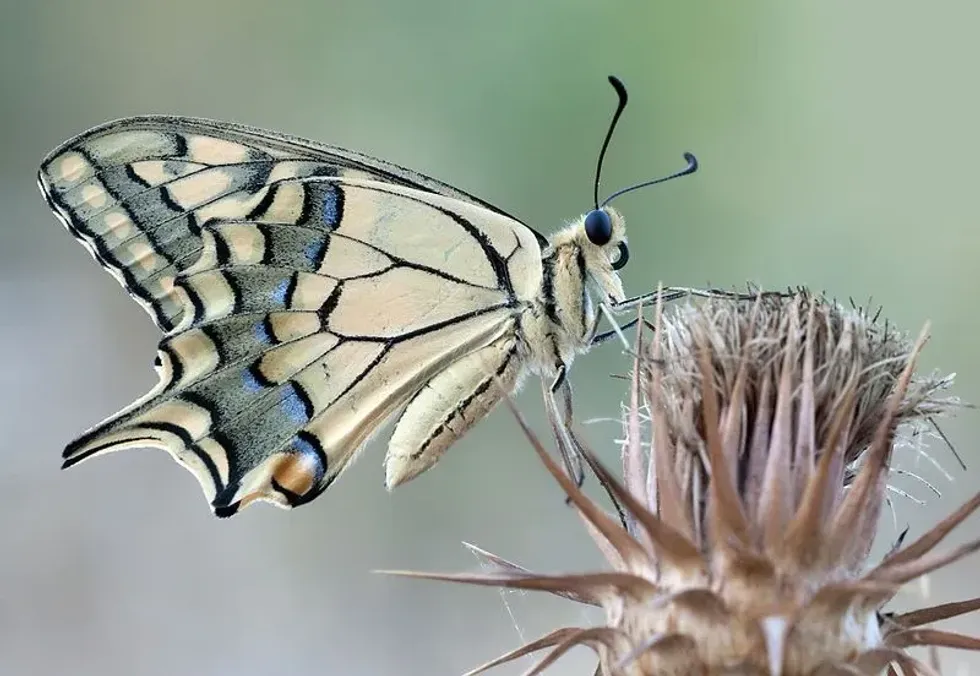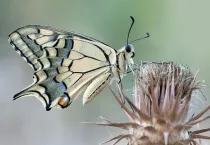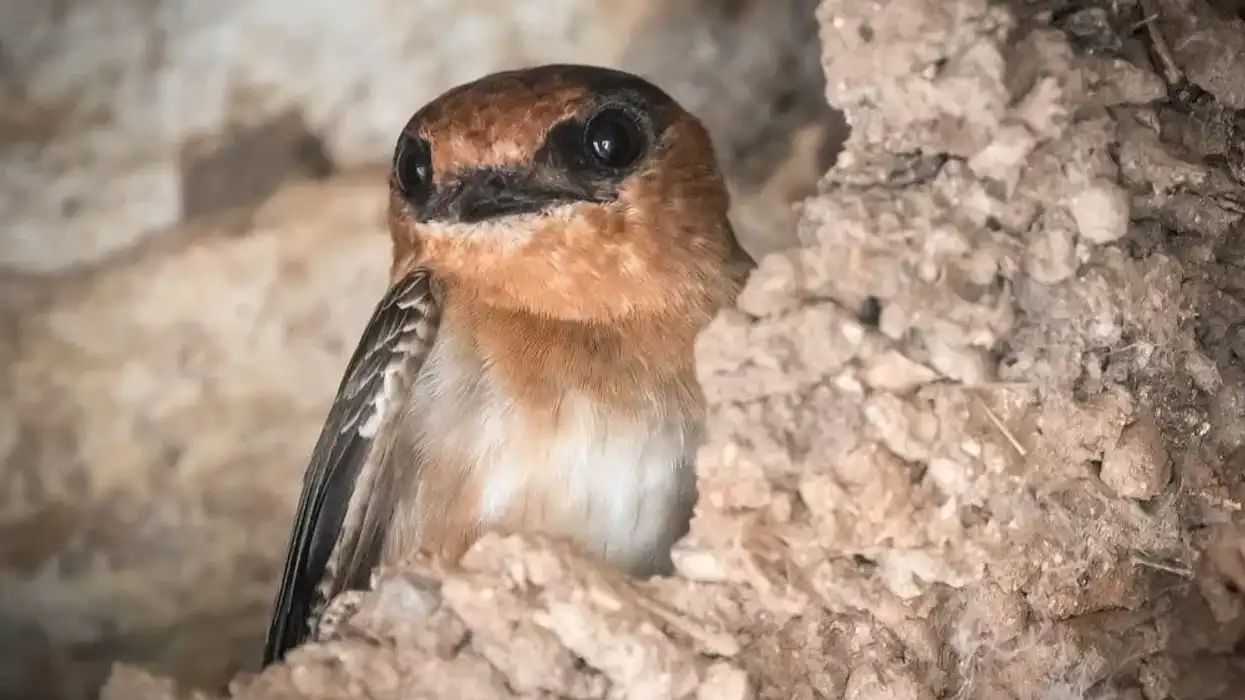The Swallowtail belongs to the Papilionidae family. This family also consists of the largest butterfly in the world birdwing butterflies.
The swallowtail butterflies are considered to be large and colorful and consist of over 550-600 swallowtail species. Its scientific name is Papilionidae is derived from the word Papilio which is Latin for butterfly. The type species include Papilio machaon and Papilio homerus.
Most of these are found in tropical regions on all continents except Antarctica. These butterflies have a tail-like extension of the hind wings but many types are tailless.
The color of the veins differs in different types. Males are an iridescent blue and females are a duller black color.
Coloration may vary among various types like yellow, orange, red, green, or blue markings or spots on a black, blue, or green background. They also have an organ called osmeterium which is used to produce a pungent smell when threatened by predators. Adults are slightly different in color than swallowtail caterpillars.
The swallowtail butterflies feed on different plants including clover, milkweed, thistles, and phlox. Swallowtail caterpillars are known to feed on nectar. The mating happens when adults unite their posterior ends and about 100 bright red-colored eggs are laid in a lifetime.
The life cycle has four states namely, egg, larva, pupa, and imago. Some colorations of this insect mimic bird droppings which helps them escape predators.
It is quite interesting to know about this insect and if you're interested, read about the Pipevine Swallowtail and Eastern Tiger Swallowtail too.
Swallowtail Interesting Facts
What type of animal is a swallowtail?
The swallowtail is a butterfly.
What class of animal does a swallowtail belong to?
Swallowtails belong to the class of Insecta.
How many swallowtails are there in the world?
There is no exact number of these swallowtails recorded in the world but there are around 600 species of this butterfly in the world.
Where does a swallowtail live?
Swallowtail butterflies are found in all the continents except Antarctica and are found in warm, tropical, subtropical, and temperate regions and areas.
What is a swallowtail's habitat?
These swallowtail butterflies are found in open habitats like fields, vacant lots, meadows, open forests, and sides of streams. The majority of species of swallowtails are found in the tropical and sub-tropical regions between 20 degrees North and 20 degrees South.
Who do swallowtails live with?
It is believed that these butterflies tend to feed alone and stay alone most of the time.
How long does a swallowtail live?
Some are known to live for about 10-12 days while some have been recorded to live for up to 35-40 days.
How do they reproduce?
The swallowtail butterfly mates or reproduces by uniting its posterior ends and after mating these butterflies go to lay eggs. An adult female can lay up to 100 bright red-colored eggs in her lifetime.
Some butterflies are known to lay all their eggs in the same plant while some lay eggs in different places. The life cycle includes four life stages, that is, egg, larva, pupa, and imago.
What is their conservation status?
The conservation status of the swallowtail butterflies is Not Extinct.
Swallowtail Fun Facts
What do swallowtails look like?
The most distinguishing feature of this butterfly is the tail-like extension of the hind wings but many species are tailless. The color of the veins differs in species.
Males are an iridescent blue and females are a duller black color. Color patterns may vary among various species like yellow, orange, red, green, or blue markings or spots on a black, blue, or green background. Sexual and seasonal differences in color patterns also occur.
How cute are they?
These butterflies are considered to be cute because of their beautiful colors and color patterns.
How do they communicate?
Similar to all butterflies, these butterflies also use scent and sight for communication for breeding and mating males attract females by pheromones and special fight displays.
How big is a swallowtail?
These swallowtails are considered to be large butterflies in comparison to other butterflies and can weigh up to 0.00066 lb (0.0003 kg).
How fast can swallowtails fly?
The exact speed of the swallowtail butterfly is unknown but the forewing span of 11.7-17.5 cm is for males and the wingspan of 13.5-18.8 cm is for females.
How much does a swallowtail weigh?
A swallowtail butterfly can weigh up to 0.00066 lb (0.0003 kg).
What are the male and female names of the species?
There are no specific names for the males and females of the species.
What would you call a baby swallowtail?
At different life stages of the butterfly's life, the name of a baby or small butterfly changes, and it can be called a caterpillar or larva.
What do they eat?
A swallowtail feeds on a variety of different plants including clover, milkweed, thistles, and phlox. It mainly depends on these five families for its food which include Aristolochiaceae, Annonaceae, Lauraceae, Umbelliferae (Apiaceae), and Rutaceae.
Some species like the black swallowtail butterfly feed on the carrot family or plants, dill, parsley, and fennel too. The young or the swallowtail caterpillars feed on the nectar of fruits from citrus trees. The species mainly found in British parts of Norfolk Broads feed on milk parsley.
Are they dangerous?
Certain species of swallowtail butterflies are considered to be dangerous to people as they are poisonous as they feed on the poisonous host plants.
Would they make a good pet?
While not much information is available about the swallowtail as a pet it is believed that most of the species of swallowtail butterflies are great to raise indoors due to abundance, plentiful food source, attractive and interesting caterpillars, and also because of the beauty of this butterfly.
Did you know...
In Britain, the swallowtail is confined only to the Norfolk Broads. All the attempts to reintroduce them to Wicken Fen in Cambridgeshire, from where they disappeared in the past in around the 50s, have been unsuccessful so far.
The swallowtail is Britain's largest species of butterfly, beating the purple emperor with a close call as it has a wingspan of 3.6 in (92 mm).
The black and white color pattern or coloration in young butterflies is believed to mimic bird droppings to keep predators away.
When in danger or threatened, the older caterpillars of the butterfly inflate a fleshy orange-colored organ called osmeterium from behind their heads and exude or produce a pungent smell or odor.
The swallowtail is known to overwinter as pupae attached low down to plant stems and come in green and brown forms based on their surroundings and can survive long periods in submerged water.
The British subspecies which are mainly found in Norfolk Broads are known to feed only on milk parsley.
A wasp called Trogus lapidator preys or hosts exclusively on Swallowtail. The female of this wasp species lays an egg in a swallowtail caterpillar but the adult comes out from a pupa and tends to leave a large tell-tale exit hole.
The types of these species include Papilio machaon, Papilio homerus, and Papilio cresphontes.
The species commonly found in the United States include black, tiger, and pipevine swallowtail.
This species of butterfly is called swallowtail because of its tail-like extension of the hindwings characteristic.
Types Of Swallowtails
There exist many types or varieties of Swallowtail butterflies like the Eastern swallowtail or tiger swallowtail, western tiger swallowtail, black swallowtail or eastern black swallowtail, old-world swallowtail, Chinese peacock butterfly, spangle swallowtail, giant swallowtail, pipevine swallowtail, spicebush swallowtail, common bluebottle, or blue swallowtail butterfly, Asian swallowtail, Zebra swallowtail butterfly, Ulysses butterfly, Scarce Swallowtail, Common rose, common jay, southern festoon, Snow apollos, Dragon swallowtail, yellow swallowtail butterfly, and anise swallowtail.
Why is the swallowtail butterfly like a skunk?
Swallowtail butterflies are like skunks because they practice Batesian Mimicry, a behavior in which the butterflies' appearance resembles or is similar to that of distasteful species that prevent predation.
Here at Kidadl, we have carefully created lots of interesting family-friendly animal facts for everyone to discover! Learn more about some other arthropods including the purple emperor butterfly, or monarch butterfly.
You can even occupy yourself at home by drawing one on our swallowtail butterfly coloring pages.










